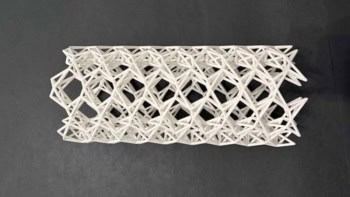Similarities between tumour growth and the physics of splashing water drops have been used by researchers in the US and Italy to predict how cancer invades healthy tissue. This has led them to propose clinical management strategies for the treatment of invasive tumours (arXiv.org physics/0610040).

Some water drops splash into multiple jets after striking a solid surface while others remain intact – and physicists have been successful at predicting this behaviour using surprisingly simple equations. These equations have been adapted by Thomas Deisboeck of the Harvard-MIT Center for Biomedical Imaging in the US and colleagues at Italy’s University of Turin, who observed that this splash/no splash behaviour is exhibited by some cancers. Tumours either send out multiple (and often deadly) invasive tentacles into surrounding healthy tissue, or they do not.
The researchers defined a tumour “invasion parameter” by modifying the fluid-dynamical equations that predict which drops will splash and how many jets will result. The invasion parameter is a function of three variables: the confining pressure exerted on the tumour by surrounding tissue (analogous to the impact pressure in a drop); the radius of the tumour; and the surface tension of the tumour. Greater pressure and larger radii favour invasive tentacles, whereas greater surface tension inhibits invasion.
In order to minimize this invasion parameter, Deisboeck and colleagues have made two recommendations to oncologists treating potentially invasive tumours. The first is to boost tumour surface tension by using drugs to increase the adhesion of cancer cells to the surface of the tumour. The second is to reduce the pressure exerted on the tumour by surrounding tissue, again through the use of drugs.
Deisboeck told PhysicsWeb that he was “hesitant at first” to pursue the splash/tumour analogy “since [the] research areas and underlying processes seem quite distinct”. However, he added that a number of experimental cancer studies support the group’s conclusions and their multidisciplinary approach.



